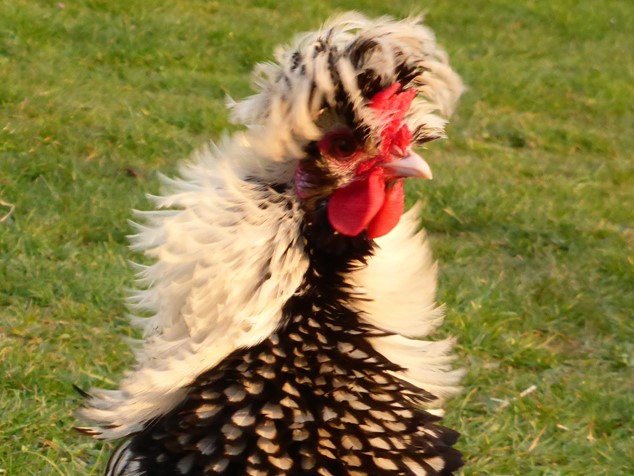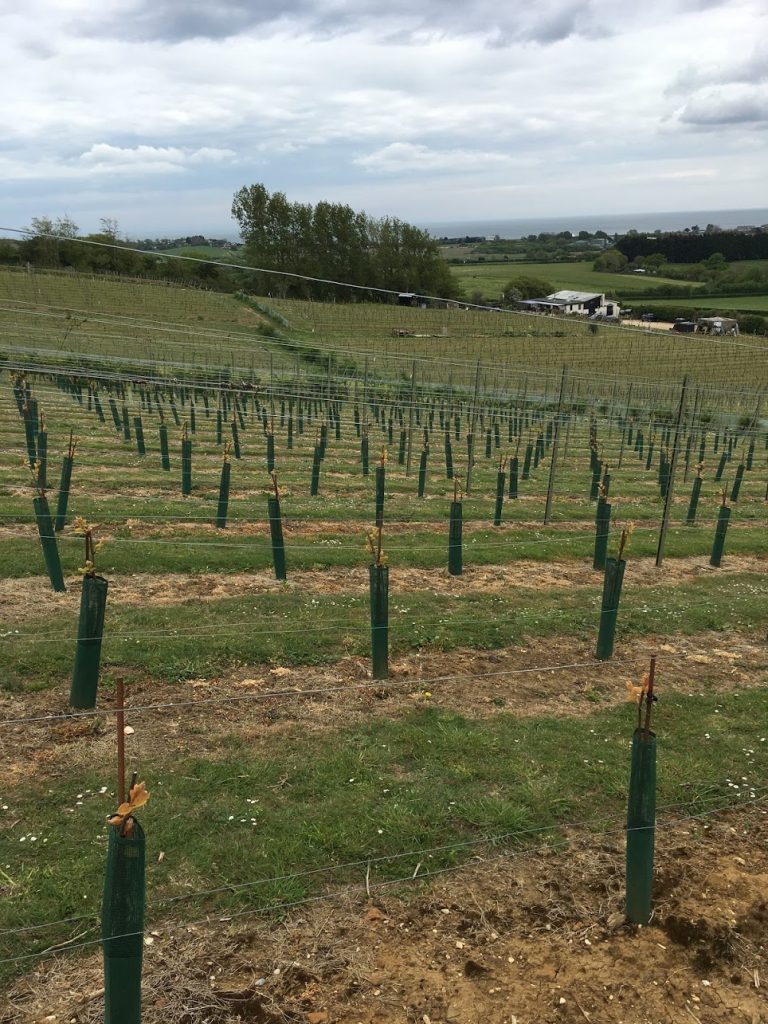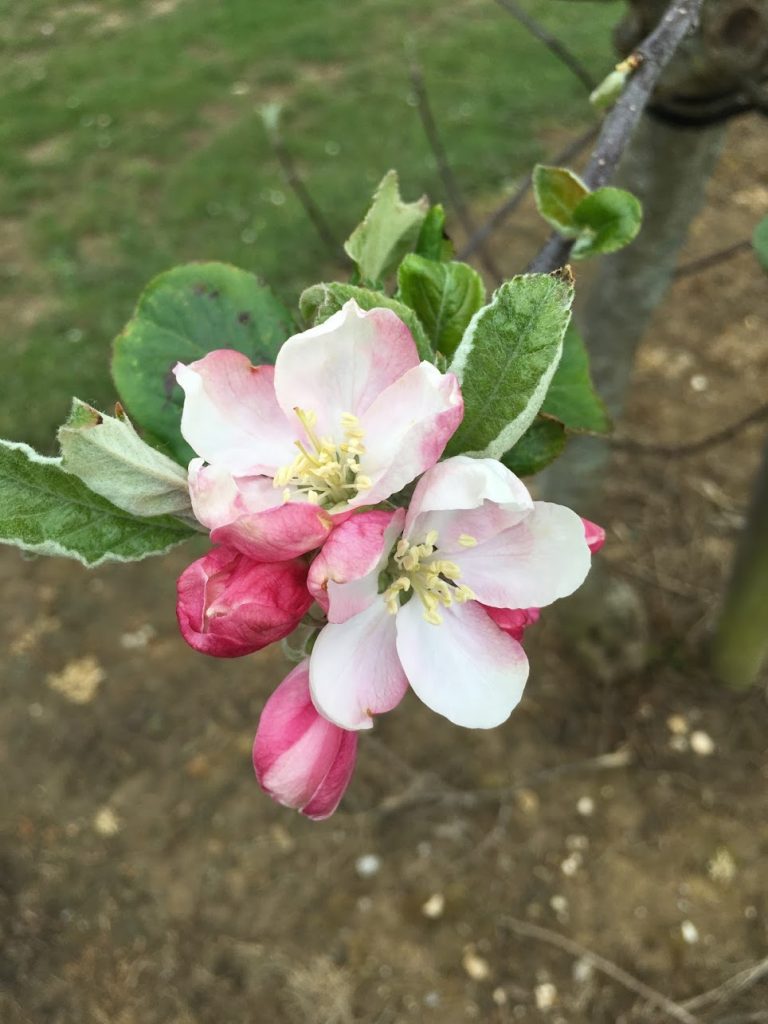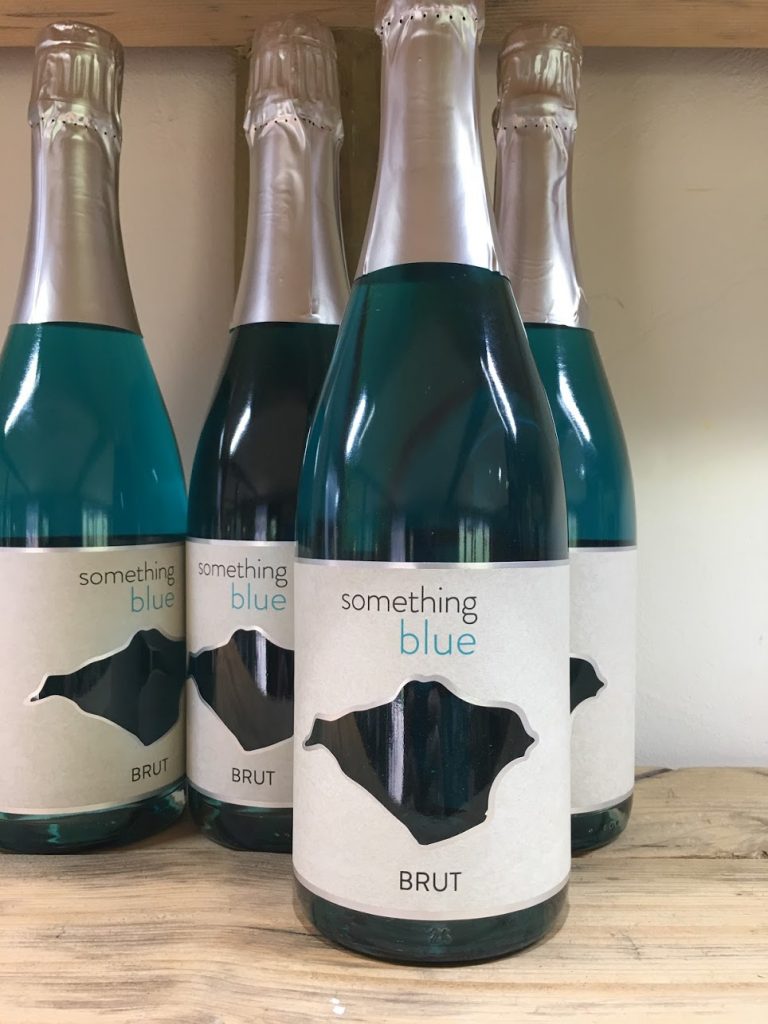The first time we visited Adgestone Vineyard, it was mid-winter. The air was still. The vines were sleeping. The car park was empty. As we got out of our car, we were greeted with fervent enthusiasm by two incredibly fluffy bantams, who came galloping down the hill towards us with delighted clucking. Our new feathered tour guides accompanied us to the cellar door, then took us inside to meet Josh, who introduced them as Lucky and Margaret. They hung around, constantly interrupting our conversation with cheeky demands for snacks.
Sadly, both Margaret and Lucky have been lost to God and a hungry fox since we last popped by, but Stanley and Kevin, a pair of young goats with a penchant for taco chips, are still entertaining visitors with their childish antics. Kevin – or was it Stanley? – clambered right into the manger for his lunch, and then spent five minutes trying to shake off the pieces of hay that were clinging to his legs, looking like a confused rapper.
Adgestone is a tiny hamlet on a narrow country road that runs beneath Brading Down on the Isle of Wight. A sign at the entrance to Upper Adgestone Road asks that you drive no more than 15 mph as this is a ‘quiet road’. This is a subtle suggestion to pernicious drivers to slow down and keep an eye out for walkers, cyclists and wildlife on narrow, winding and poorly surfaced rural lanes. I slow down and feel the urge to whisper. Over the hedge on our left, about half a mile across the fields, lies the Brading Roman Villa, discovered in 1879 by a local farmer. In front of us, we can see vines crawling up a slope almost as steep as those we have seen along the Moselle.
On his chatty, informative website, Russell Broughton tells how he took on the vineyard, on a whim, after twenty-six years of working as an engineer. With no previous experience of wine making or viticulture, or even running a small café, Russell decided to throw caution to the winds and take the plunge anyway.
It took two years to set up a loan for the venture, but at last, in July 2013 he sailed off into the sunset – almost literally – leaving the mainland and a mainstream lifestyle behind.
Adgestone Vineyard had a good reputation in the 1970s, but forty years on, it needed barrels of TLC. Despite loads of enthusiasm, Broughton doubtless faced a learning curve as steep as his new vineyard, but he jumped in feet first. The building, containing café, cellar and cellar door, was thoroughly refurbished, and around 3000 young vines were planted that year, with no expectation of a harvest for the next four or five years. By the end of the first year, before and after photos show the winery already looking far less shabby.
I have already visited Adgestone two or three times, for a tasting or a light lunch in the cosily rustic café, and there is always a warm welcome – not only from the chooks! But this time – a blue but rather brisk spring day – I am keen to do the winery tour. Complete with map and headset, I wander through the vines, pausing occasionally to enjoy the wonderful views down the neat rows of early budding vines, over the neighbouring fields and down to the sea at Sandown, where huge container ships and ferries head in an orderly manner towards Southampton. It looks like a life-sized game of Battleships.
We know that the Romans brought viticulture to England over 2000 years ago, and with the Roman Villa lower down the hill, it seems fair to assume that they would have planted vines on these south-facing, chalky slopes. Due to several historic upheavals – Viking’s devastating villages and vineyards in the 8th century, Normans replanting them in the 11th century, and the abolition of the monasteries in the 16th century killing off viticulture for a second time – wine making in England pretty much disappeared until the mid-20th century.
Many of the grape varieties at Adgestone originate in Germany for the sensible reason that these are already known to thrive in a similar climate. South Australian winemakers have made the same connection and have been having a whole lot of fun experimenting with Mediterranean grape varieties, doubtless suited to our hot, dry climate better than the original northern European varieties.
More familiar with grape varieties from Italy, Spain and southern France, these cold climate grapes – many of them new hybrids created in the last thirty years – are unknown to me. Phoenix, Bacchus, Regent, Rondo, Orion, Pinot Noir, Schönburger, Seyval Blanc. Great names that roll round your mouth like marbles And then there are the non-grape based wines made from fruit and flowers foraged from the hedgerows or the veggie patch: elderflower and blackberry, rhubarb and root ginger. I like the idea of serving these sweeter wines icy cold on a hot, sunny afternoon, but I could also imagine warming the ginger wine to subdue a dose of Man Flu.
Juggling handbag, map and headset, I dutifully follow the designated route up the hill and around the vines, where soft, newborn leaves are beginning to unfurl. As I stroll, I am given plenty of useful tips for starting my own vineyard. I learn about a ‘double guyot’ (a vine training system to maximize exposure to the sun) and why I should prune the vines ruthlessly for maximum yield. I discover why not watering the vines ensures deeper roots, broader leaves and more fruit. I learn that grapes used for the blush (rosé) are lightly pressed immediately after picking and then strained to prevent too much colour and tannin leaching into the juice. I hear about bentonite and sulphur and yeasts and proteins. It is a thorough and comprehensible chemistry lesson for a girl who failed year 10 chemistry with a staggering 33%. Having inspected the cellars, the wine press and the fermentation tanks, I am ready to emerge into daylight and taste the products of all this creativity and hard work.
Currently, there are nine wines on the list, including the four made from fruits other than grapes. The blush is apparently out of stock (it had already sold out by Christmas last year), but the new batch will be ready sometime this month, so I must remember to drop in again in two or three weeks. Meanwhile, there are two dry whites, and a red to taste, as well as the sweeter fruit wines. There is also an expensive and startlingly blue bubbly, aptly named ‘Something Blue’ that is not available for tasting, but may force me to rethink my aversion to blue foods. (Remember Bridget Jones’ soup? Not to mention blue Smarties.)
Adgestone’s Dry Wight (please note the spelling and, yes, of course it’s intentional) is made with Phoenix grapes, the style reminiscent of a crisp sauvignon blanc. The grape stems are added during fermentation to enhance the citrus flavour, Josh tells me. He then explains how natural sulphides protect the wines for a longer shelf life but can mask the flavours, and shows me a party trick to overcome this: take a mouthful of wine, lean over, and slurp the wine noisily to the back of your mouth. I highly recommend you practice this at home first, or you may end up choking and spraying wine over your companions, but it is a surprisingly effective technique to better appreciate the flavours in the wine. This dry white is refreshing and bright – good for a warm afternoon by the beach or in the garden – and apparently excellent with cheese or a carbonara.
The Oaked Wight, Josh assures me, is only very lightly oaked, but I have never minded a bit of oak. And the slurping trick makes it more pronounced. This wine is a blend of four grapes – Bacchus, Schönburger, Phoenix and Seyval Blanc. As the wine rolls over my tongue, there are delicate notes of buttered toast, and the wine notes suggest it would be good with white fish or chicken. Oak and all, I am taking at least one of these home with me.
Then onto the red wine, which is surprisingly full-bodied for an English red. The taste doesn’t linger terribly long, but while it does, there is time to notice an earthy, almost peaty flavour with a whisky-like smokiness, a comfortable amount of tannin and plenty of soft fruits (blackcurrant, blackberry) that would do justice to a barbecued steak or roast lamb. This wine is made from Rondo grapes with a splash of Regent, neither of which I know much about. Rondo, a dark-skinned grape variety, was created in Czechoslovakia in 1964. Specifically designed for the northern Europe climate, it makes a dark red wine, like a Czech garnet. Regent is also a relatively new grape: a Silvaner and Müller-Thurgau cross popular in England and Germany.
Before I leave, I pop over to say goodbye to Kevin and Stanley, and peek inside the rather gorgeous gypsy caravan that was built last summer with thoughts of overnight guests. Our daughter, much taken with the idea of minimizing our carbon footprint and building a compact container home, would love it, although I suspect the lack of bathroom might prove troublesome, at least for us ladies!
All done, but I will definitely be back later in the month to try the Blush, perhaps accompanied by my favourite tasting platter, on the lawn, in the sun…
*With thanks to Adgestone Vineyard website for the lovely photo of Margaret. Mine was hopeless!





